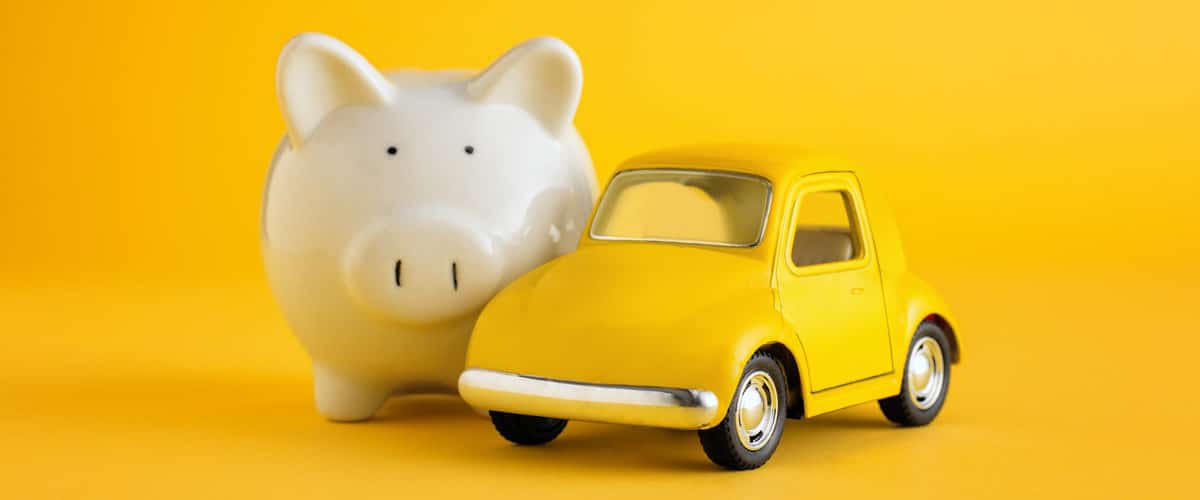What kind of down payment do I need to finance a car?
November 20, 2020
You’re about to buy a new car and now you have to answer the question of, “how much of a down payment do I need to finance this car?” Well, here is a handy guide to help you determine just how much money you should be putting down and why.
For a long time now, the opinion has always been to make a down payment equal to 20% of the total cost of the car you are looking to finance. But anymore that number has shifted to 10-20% of the total cost. According to an Edmunds.com analysis of new and used car purchases in 2019, most people put an average car loan down payment of 11.7%.
So, what’s with the trend of lower down payments? Is the 20% “rule” outdated? What might be the drawbacks of paying a smaller down payment? Below we’re breaking down the benefits of a down payment, how much you should think about putting down, and the best way to optimize your payment.
What Is a Down Payment?
A down payment is the upfront amount you pay towards the purchase of a car, reducing the amount of money you need to borrow. It’s an immediate equity investment in the vehicle, which lowers your monthly payments and interest charges over the life of the loan. By offering a down payment, you also demonstrate to lenders a level of seriousness and financial responsibility, which can potentially improve your loan terms.
Do I Need to Provide a Down Payment?
While not always mandatory, providing a down payment is highly advisable when financing a car. Here are a few reasons why:
- Lower Monthly Payments: A down payment reduces the total amount you need to finance, thereby lowering your monthly payments.
- Better Interest Rates: Lenders often offer better interest rates to buyers who provide a down payment, as it reduces their risk.
- Avoiding Negative Equity: Cars depreciate quickly, and without a down payment, you may find yourself in a negative equity situation where you owe more on the loan than the car is worth.
- Improved Loan Approval Chances: A down payment can improve your chances of loan approval, especially if you have a lower credit score.
How Much Is Typically Put Down?
The typical down payment for a car ranges between 10% to 20% of the vehicle’s purchase price. However, the right amount for you depends on your financial situation and the terms of your loan. Here are some factors to consider:
- Budget: Assess your finances to determine how much you can comfortably afford without straining your budget.
- Loan Terms: Explore different loan terms to understand how varying down payment amounts affect your monthly payments and total interest.
- Vehicle Depreciation: Consider the depreciation rate of the vehicle model you’re interested in, as a higher down payment can help offset rapid depreciation.
- Special Offers: Sometimes, dealerships or lenders may have special financing offers that require a smaller down payment or none at all.
It’s essential to strike a balance between a down payment you can afford and one that sets you up for manageable monthly payments and interest charges. Consulting with a financial advisor or using online auto loan calculators can provide a clearer picture of what down payment amount is suitable for your circumstances.

Benefits of a Down Payment
A good way to approach the idea of a down payment is to think of it as the first payment you’ll make on your car when you go to finance it through a bank. No matter where you go to finance, the down payment is always going to be seen as a percentage of the car’s purchase price, so if you are buying a $20,000 car and want to make a 10% down payment then that is going to be $2,000 you are going to have to pay straight out of the gate.
Banks/Lenders often want you to make a down payment to show you are committed to paying back the loan they are about to give you. A good rule based on how banks and lenders view financing is to try to pay no less than 20% of the sale price for new cars (they have a much higher value so typically the loan is a lot bigger) and then 10% down for used cars. This helps alleviate overall interest and financing costs.
Below are some additional benefits of making a down payment:
You’ll Pay Less Interest in the Long Run
The more money you are able to put down on your new car means less money you are needing to borrow from the bank. With a smaller loan, you’ll pay interest on a lower balance which means monthly payments are lower and the total cost of interest will be significantly less too. It just means more money you get to keep. It is also important to note how much you spend on a car over its lifetime in addition to the down payment.
Credit Karma has a great example of how much interest you could pay on a loan and how putting more down will save you money:
If you took out a five-year $30,000 car loan with a 4.5% interest rate, you’d pay a total of $3,557.43 in interest. But with a 20% down payment ($6,000) on the same car, you’d pay only $2,845.95 in interest on that five-year loan — a savings of more than $711.
With a larger down payment, you could also qualify for a lower interest rate. The bank looks at your loan-to-value ratio to help determine the interest rate they will give you on your loan.
It Might Be Easier to Get Approved
Again, this all has to do with how much the bank has to loan you for you to buy a new car. If they look at your credit score, payment history, and a myriad of different factors and don’t think you can afford a $30,000 car then they won’t approve of you. BUT if you are able to pay 20% of the $30,000 then you are giving the bank a live view of your financial responsibility and they could approve the loan because of that. The biggest thing for the lender is they don’t want to have to repossess your car if you aren’t able to repay the loan. The value of the car instantly decreases the second you drive it off the lot so the potential for the bank to lose money is extremely high. A large down payment puts those worries at ease.

You Could Get a Lower Monthly Payment
This is pretty self-explanatory based on the info above. But the bigger the down payment you put on your car then the less money you need to borrow from the bank. The less money you borrow from the bank means the lower your monthly payment would be if you stick to the same amount of time agreed upon to pay back the loan.
Credit Karma has some more numbers to throw your way as an example of how down payments affect your monthly payment:
With a five-year $30,000 loan at a 4.5% interest rate, your monthly payment would be $559 (or a little more if you include sales tax in the loan).
But if you made a down payment of $6,000 and borrowed just $24,000 for the same car at the same interest rate over five years, your monthly payment would drop to $447. Making that down payment would save you $112 each month.
Avoiding Depreciation
Depreciation is something a lot of people don’t take into account when they are purchasing a vehicle and depreciation can quickly sneak up on you if you aren’t careful. Vehicles lose value as soon as they are driven off the lot, about 15% off the value a year for used cars and a heartbreaking 25% off the value of new cars a year. If you don’t make a good size down payment then you could end up upside down on your car loan.
Being upside down on your loan means you owe more than the vehicle is worth.
Now, what does that mean? Well, it would make it extremely difficult to sell or trade-in your car later. Imagine trying to sell your car and you actually have to pay cash to sell it to someone. You are not going to like that one bit. Always check the math and make sure you put a large enough down payment on the car you’re looking to buy to avoid the upside down.
Zero Down
If you are going to be taking advantage of a factory promotion and jump on the zero-down train to keep some money in your pocket that is a perfectly viable option. Plus, it would allow you to get behind the wheel of a new car right away instead of having to save for months or maybe even years to get to that 20% down mark depending on how many cars you are looking to buy. However, your credit has to pretty much be in superb shape in order to qualify for a zero-down loan. A couple of drawbacks to putting no money down are two of the benefits we talked about earlier; higher monthly payments and potentially higher interest rates/charges (unless you are able to qualify for a 0% APR promotion as well).
If you decide to go the zero-down route then be sure to check out gap or new-car replacement insurance since the moment you drive the car off the lot, you’ll already be upside down in your loan.
Low Credit Down Payments
If you are one of the many people that might have a less than great credit score than the down payment is where you are going to be able to convince lenders that you aren’t a risky investment. The more you put down on your car the greater your chances are for getting approved by a lender, plus a bigger down payment will allow you to choose a shorter finance length which will save you money in the long run.
Our Dick Says Yes locations in Vancouver, WA, and Gladstone, OR are two great options for those that might be a little credit challenged. They work with banks on the daily to get customers with low credit scores approved for reasonable rates and payments. If you’re in a credit pinch, give them a call or contact them online to see how our credit experts can help you.

The Sweet Spot
At the end of the day, the ideal down payment amount should be something you can reasonably save up to without emptying out your savings account.
The nice thing about a down payment is you are able to add to it with the trade-in value of your current car. So, going off the example we made earlier if you are buying a $20,000 car and are planning on putting 10% (or $2,000) of the sale price down out of pocket you can then supplement that initial percentage with the value of your current car. All of a sudden, instead of just paying the 10% you could be paying 20% depending on the value of the trade-in. If your current car has enough trade-in value you might even be able to simply rely on that as your down payment rather than paying a cash down payment.
Sources:
Credit Karma: https://www.creditkarma.com/auto/i/car-down-payment-benefits
Edmunds: https://www.edmunds.com/car-buying/how-much-should-a-car-down-payment-be.html
Experian: https://www.experian.com/blogs/ask-experian/how-much-of-a-down-payment-should-you-make-on-a-car/
AutoTrader: https://www.autotrader.com/car-shopping/whats-right-down-payment-car-loan-or-lease-212702
Contact Us